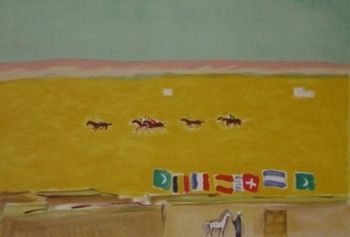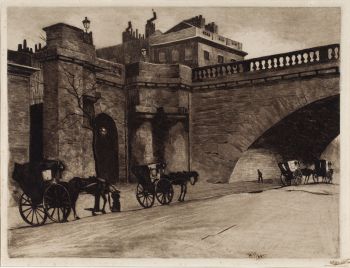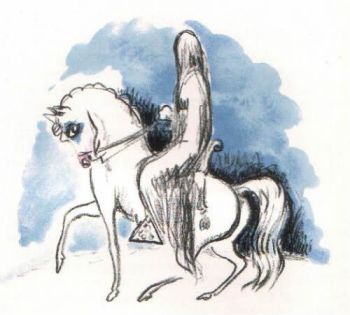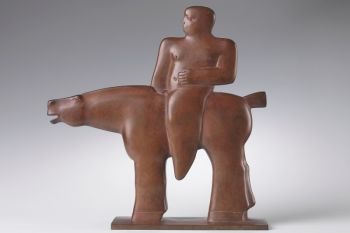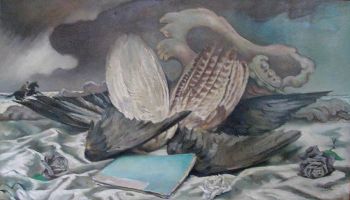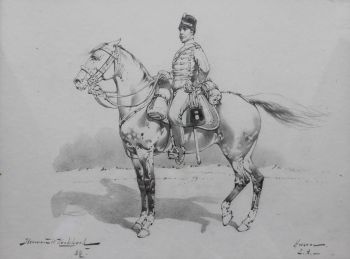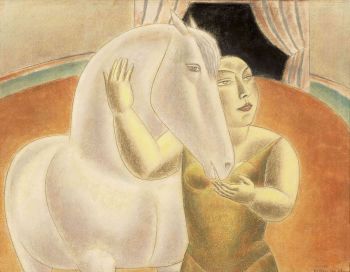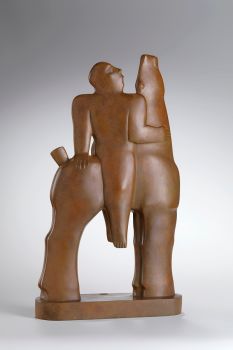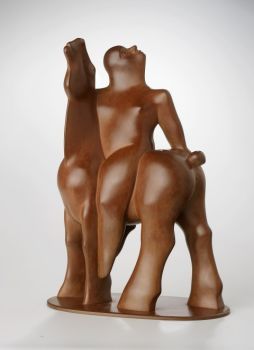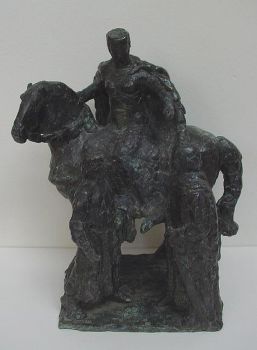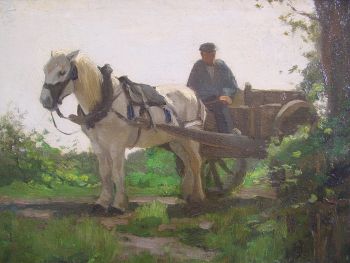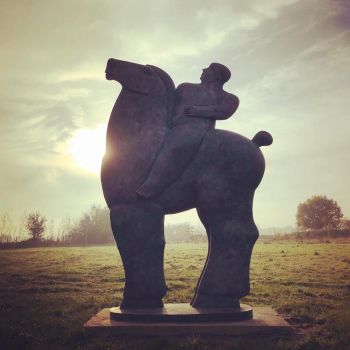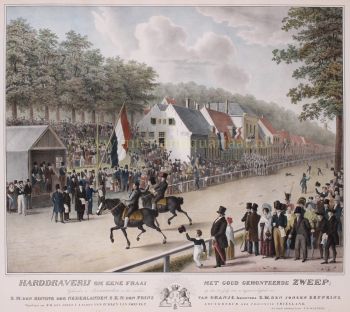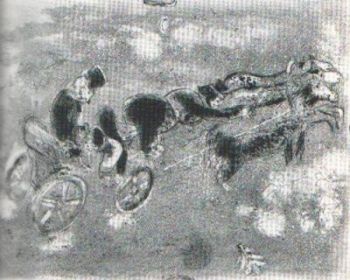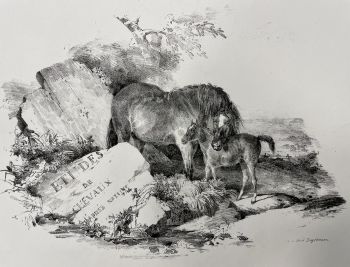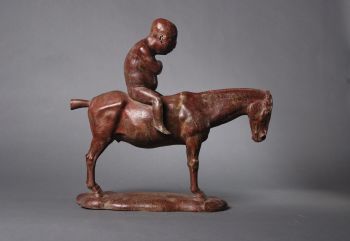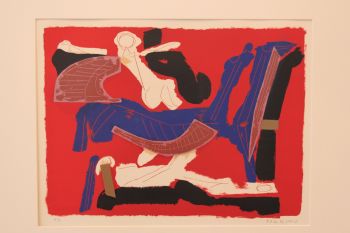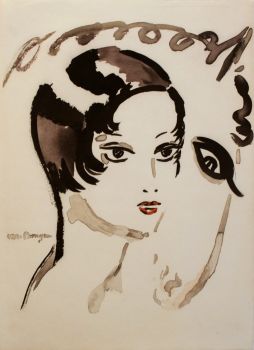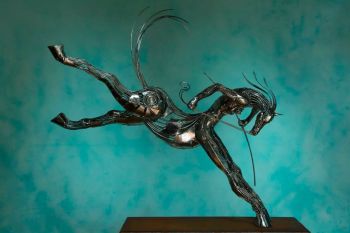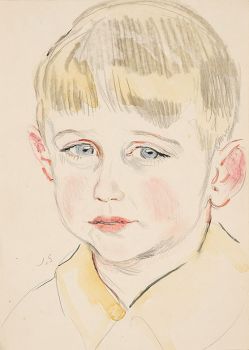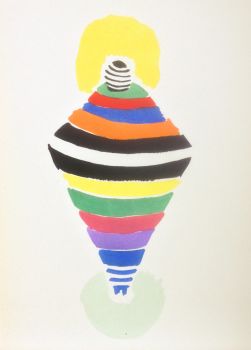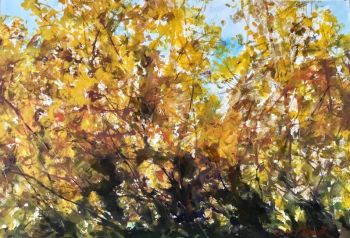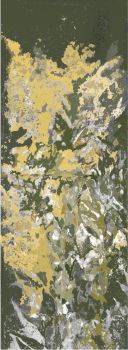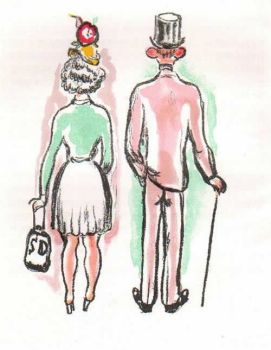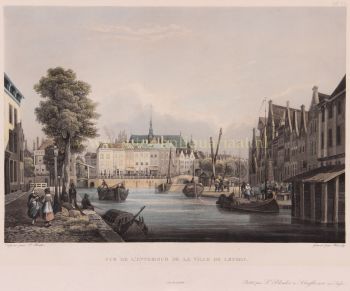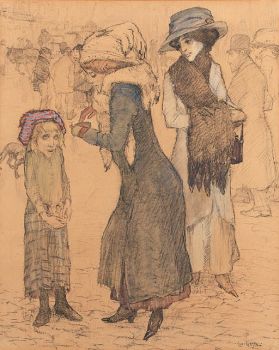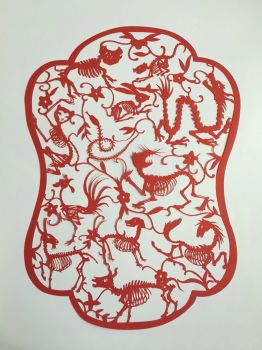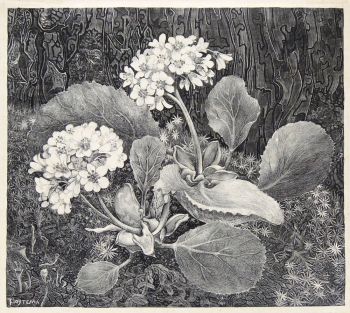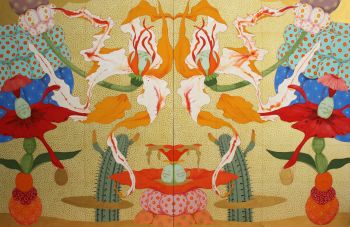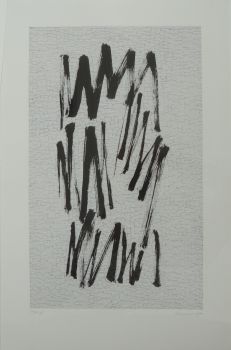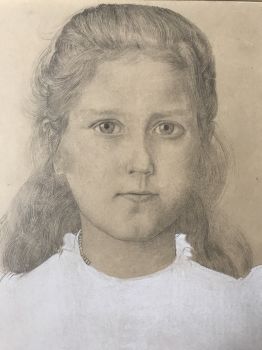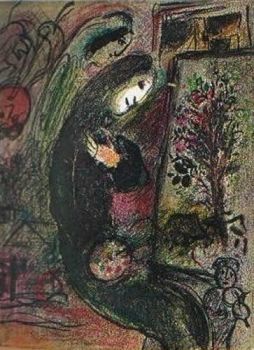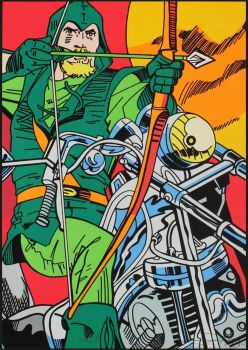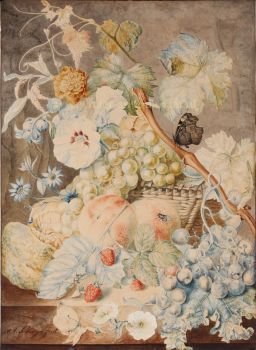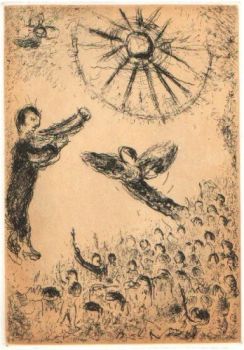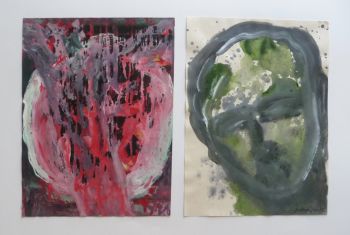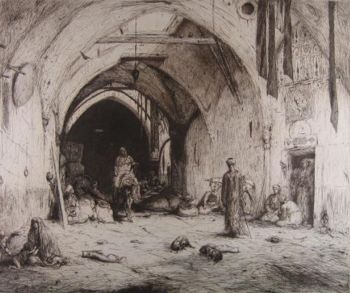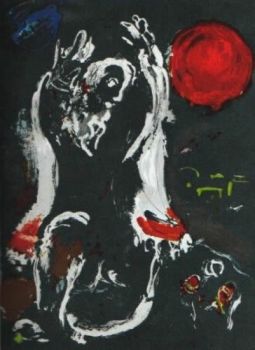14 hand-coloured aquatint plates of wonderful racehorses 1828
John Frederick Sr. Herring
InchiostroCartaAcquerello
60 ⨯ 42 cm
Attualmente non disponibile tramite Gallerease
- A proposito di opere d'artePortraits of the winning horses of the Great St. Leger Stakes, at Doncaster, from the year 1815 to the present year inclusive.
London, S. and J. Fuller (printed by L. Harrison), [1828].
Imperial folio (60×42 cm).
With engraved vignette on the letterpress title-page, 14 hand-coloured aquatint plates by T. Sutherland and R. G. Reeve after Herring, each with information on a separate letterpress leaf. Contemporary plain boards with publisher's printed label wrapper-title on front board (rebacked with burgundy half morocco and matching corners).
"Extremely rare" (Tooley) 1828 edition of Herring's finest work, the outcome of his fascination with horse racing in general and the St. Leger Stake in particular. "In the writer's estimation, the first series of the St. Leger winners contains the very best of Herring prints . . . they were engraved by Sutherland, a more competent aquatinter and colourist than his successors who handled these race-horses" (Siltzer).
This is the second edition of this series of wonderful racehorse portraits.
Very slight offsetting to text. Boards darkened and worn at the edges, internally in fine condition and untrimmed. A rare work with beautiful horse plates and detailed information.
Cf. Podeschi 128 (1824 ed. with different title, with 10 plates plus extra plate for 1825); Siltzer 139-146 (various eds.). - A proposito di opere artistaJohn Frederick Herring Sr. (1795, Londra – 1865), noto anche come John Frederick Herring I, era un pittore, creatore di insegne e cocchiere. Herring era figlio di un commerciante londinese. I primi diciotto anni della vita di Herring furono trascorsi a Londra, dove i suoi maggiori interessi erano il disegno e i cavalli. Nell'anno 1814 si trasferì a Doncaster. A Doncaster, in Inghilterra, Herring fu impiegato come pittore di insegne di locande e insegne di carrozze sui lati delle carrozze, e il suo successivo contatto con una ditta di proprietà di un certo Mr. Wood portò alla successiva occupazione di Herring come autista di pullman notturno. Herring trascorreva il suo tempo libero dipingendo ritratti di cavalli per i saloni delle locande e divenne noto come il "cocchiere artista". Il talento di Herring è stato riconosciuto da clienti facoltosi e ha iniziato a dipingere cacciatori e cavalli da corsa per la nobiltà. Nel 1830 partì per Newmarket, dove trascorse tre anni prima di trasferirsi a Londra. Dal 1840 al 1841 Herring visitò Parigi, dipingendo diversi quadri, su invito del duca d'Orléans (il duca d'Orléans). Nel 1845 Herring fu nominato pittore di animali dalla duchessa di Kent, seguito da una commissione della regina Vittoria. Nel 1853 Herring si trasferì nel Kent e smise di dipingere ritratti di cavalli. Ha trascorso gli ultimi 12 anni della sua vita al Meopham Park. Quindi ha ampliato la sua materia dipingendo scene agricole, quadri narrativi e opere sportive di caccia, corsa e tiro. Herring si colloca insieme a Edwin Landseer come uno dei più eminenti pittori di animali della metà del diciannovesimo secolo. Espose alla Royal Academy dal 1818 al 1865 e alla Society of British Artist nel periodo dal 1836 al 1852.
Artwork details
Categoria
Soggetto
Stile
Materiale e Tecnica
Colore
Related artworks
Max Klinger
Psyche und ihre Schwestern/Psyche and her sisters1880
Prezzo su richiestaHans den Hollander Prints
1 - 4 / 24Engelbert Kaempfer
IL LIBRO DI ENGELBERT KAEMPFER1651 - 1716
Prezzo su richiestaZebregs & Röell - Fine Art - Antiques
Antonie Derkinderen
Memory book Exhibition of Dutch Painting1892
Prezzo su richiestaKunsthandel Pygmalion
Tilmanus Nicolaus Maastricht
Missale Romanum con fornimenti d'argento olandesi1788 - 1792
Prezzo su richiestaJacob J. Roosjen SRI
LAWRENCE WEINER
"SKIMMING THE WATER [MENAGE A QUATRE]" Signed book plus small artwork2010 - 2014
Prezzo su richiestaGallerease Selected
Hermann Nitsch
"UNDER MY SKIN" Signed book incl. small artwork and DVD in a matching box2010 - 2014
Prezzo su richiestaGallerease Selected
Tilmanus Nicolaus Maastricht
Missale Romanum con fornimenti d'argento olandesi1788 - 1792
Prezzo su richiestaJacob J. Roosjen SRI
Engelbert Kaempfer
IL LIBRO DI ENGELBERT KAEMPFER1651 - 1716
Prezzo su richiestaZebregs & Röell - Fine Art - Antiques
Yoko Ono
YOKO ONO: "ARISING" SIGNED BOOK PLUS SMALL ARTWORK 2010 - 2014
Prezzo su richiestaGallerease Selected
Antonie Derkinderen
Memory book Exhibition of Dutch Painting1892
Prezzo su richiestaKunsthandel Pygmalion
1 - 4 / 22Willem Witsen
Waiting carriages in front of Waterloo Bridge1850 - 1900
Prezzo su richiestaKunsthandel Pygmalion
H.J. van der Weele
Horse and carriage in landscape1850 - 1900
Prezzo su richiestaKunsthandel Pygmalion
1 - 4 / 24- 1 - 4 / 24

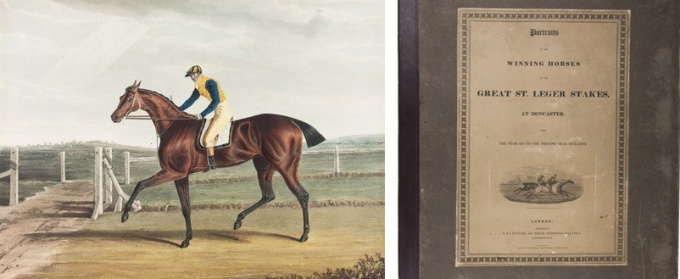










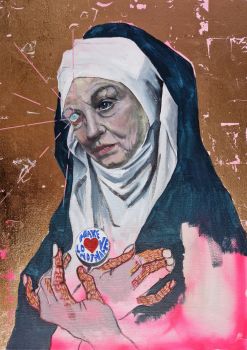
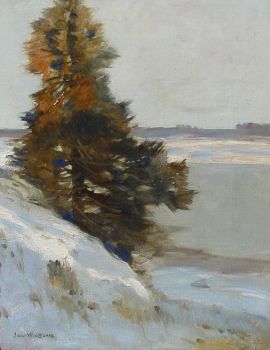
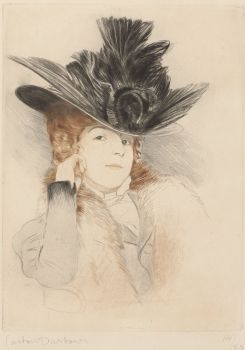

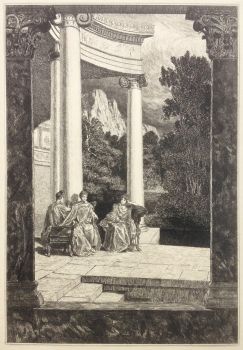


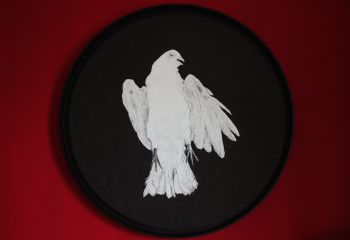




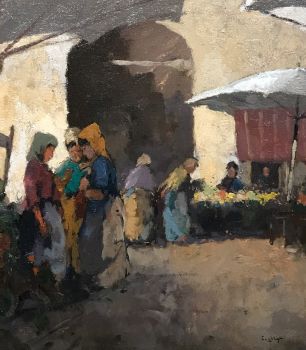






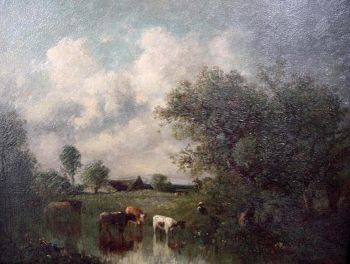
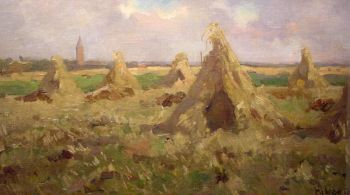







!["SKIMMING THE WATER [MENAGE A QUATRE]" Signed book plus small artwork by LAWRENCE WEINER](https://media-2.gallerease.com/images/442bfd5f-fc31-4e18-a2fa-ee0c08eade64/350x350/skimming-the-water-menage-a-quatre-signed-book-plus-small-artwork.jpg)









